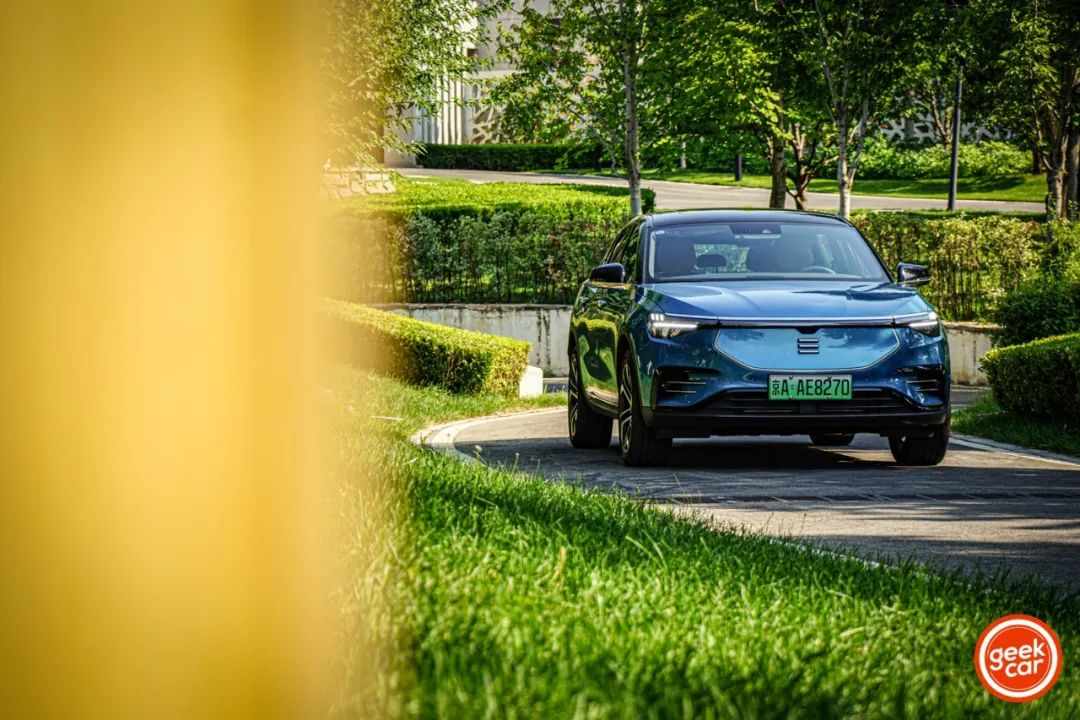Author: Twin-turbo fat boy
A few days ago, the second model of the Arcfox brand, also the first extended-range electric vehicle ME5, was officially launched. My WeChat Moments became filled with it:
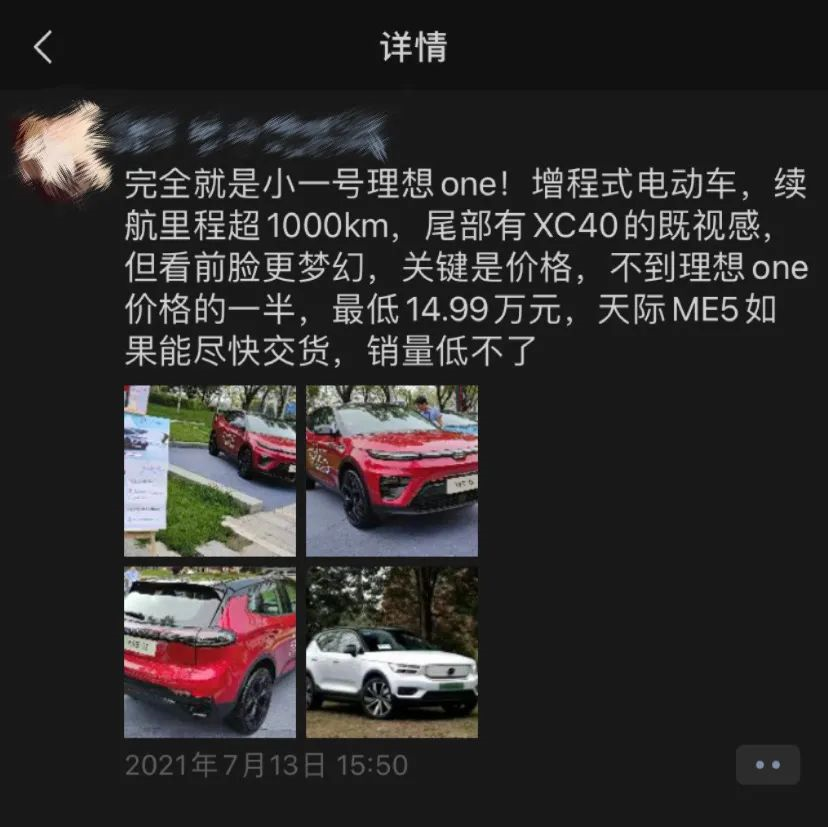

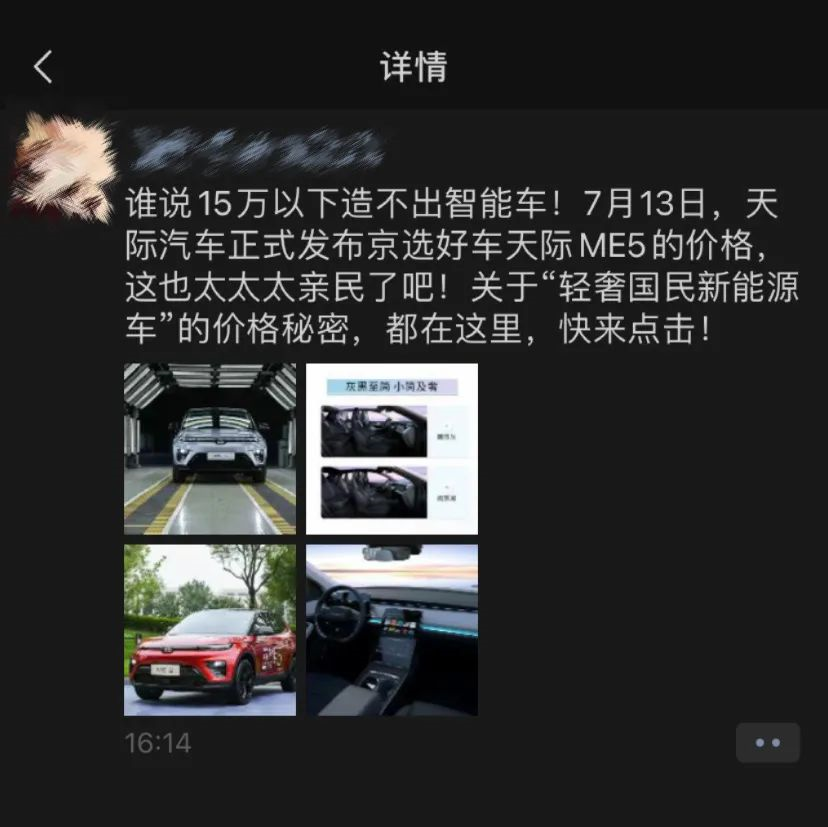
Let’s take a look at the hashtags: #Arcfox ONE, #Inexpensive, and #People-friendly.
As for me, who has not yet experienced the ME5, I won’t say much. But, I was fortunate enough to have a one-month test drive of the Arcfox’s first model, ME7. Therefore, today I want to share with you my experience with the Arcfox ME7 in this article, and say a few words about the “expectations” of the Arcfox ME5 that has not yet been experienced.
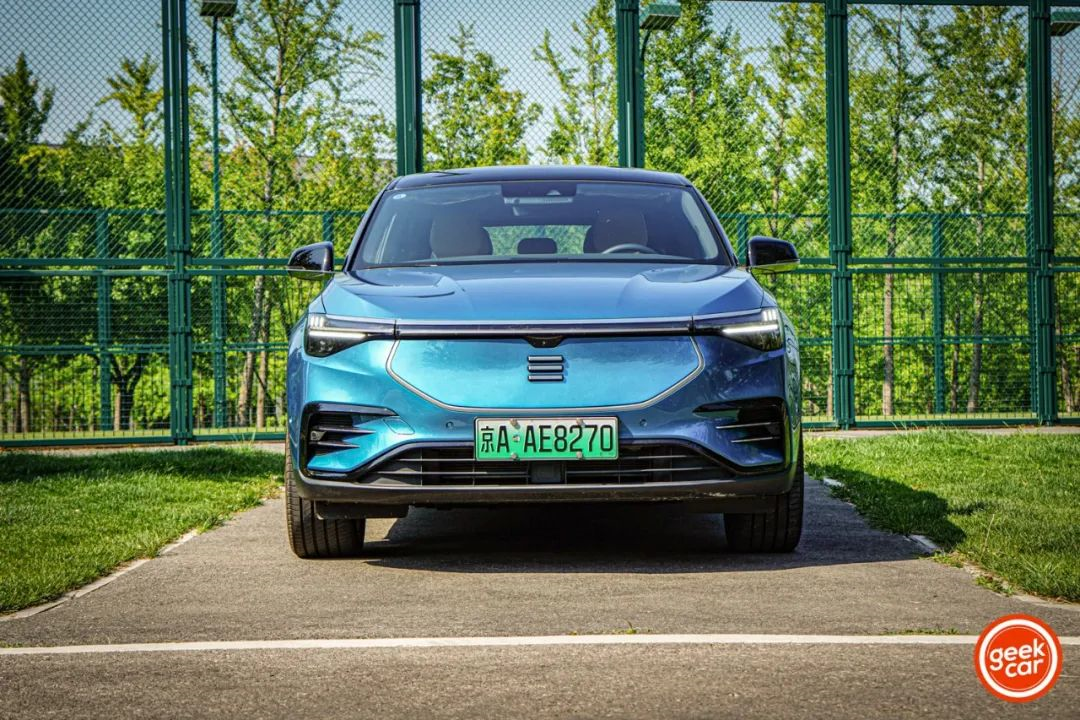
In late May of this year, when I picked up the car, the Arcfox ME7 was still a new car that had just completed the registration procedure, with only 28 kilometers of mileage. When I returned the car at the end of June, the total mileage had increased to 2,509 kilometers. I forgot to take a picture of the mileage when I picked up the car, but I reset the mileage counter at that time, and you can calculate it from the following pictures:
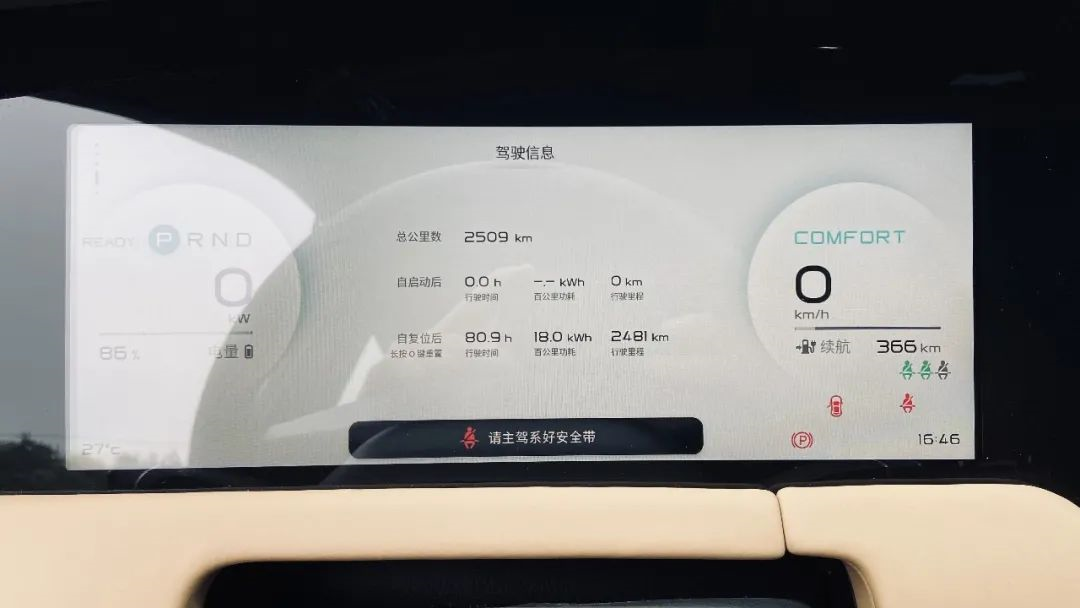
Although I am not a car owner, after experiencing the 2,481 kilometers of driving, I really have a lot to say.
Want to be like Tesla, but can’t be like Tesla
Intelligence is something that we, as automotive technology media, must pay attention to. From the intelligent cockpit and the interaction design of intelligent driving in this car, it can be seen that the product manager of Arcfox ME7 has drawn a lot of inspiration from Tesla.
Let’s talk about the intelligent cockpit first.
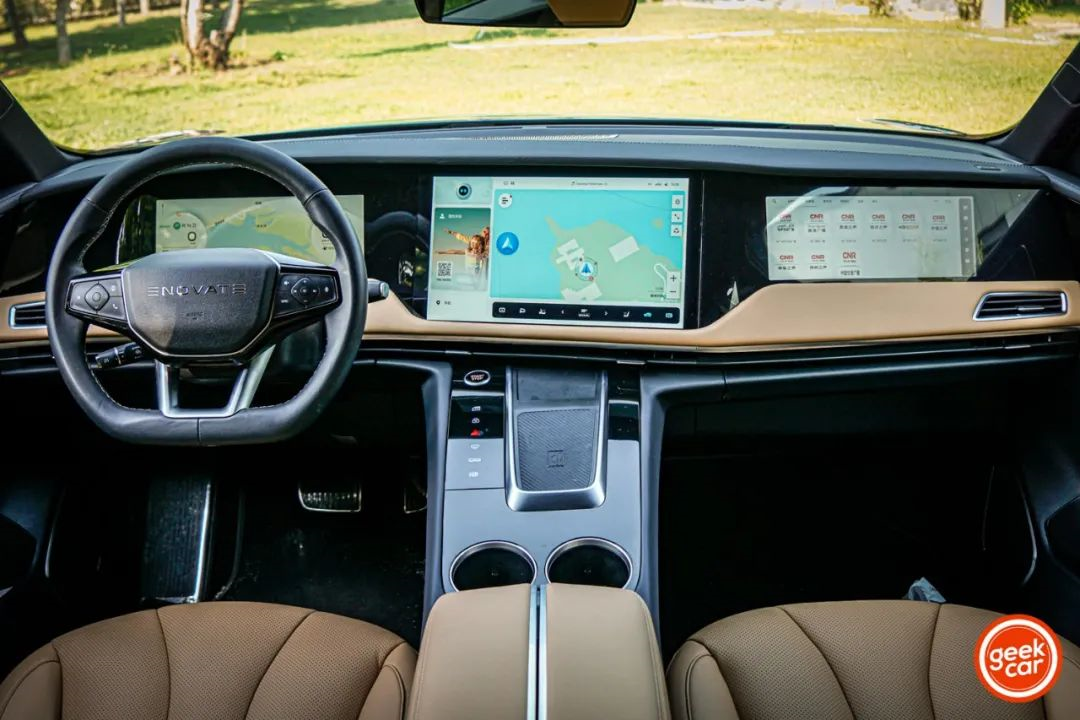 The entire cabin, except for the steering wheel, basically has no physical buttons. The most eye-catching feature in the cabin is the 15.6-inch central control screen. The layout of the HMI of the vehicle system is very similar to Tesla’s design, especially the Dock bar at the bottom.
The entire cabin, except for the steering wheel, basically has no physical buttons. The most eye-catching feature in the cabin is the 15.6-inch central control screen. The layout of the HMI of the vehicle system is very similar to Tesla’s design, especially the Dock bar at the bottom.
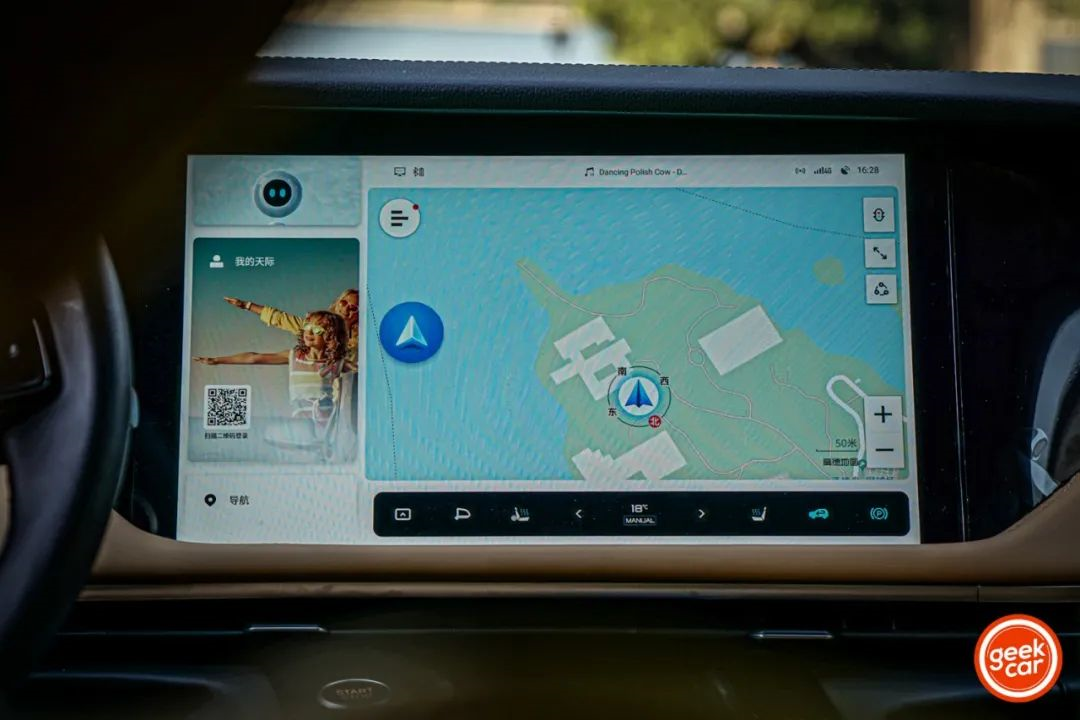
The vehicle system of the Skywell ME7 is built on Android 8.1.0. The main page of the vehicle system is set with a scrollable card UI on the left side close to the driver, which can quickly enter some commonly used functions in driving scenarios.
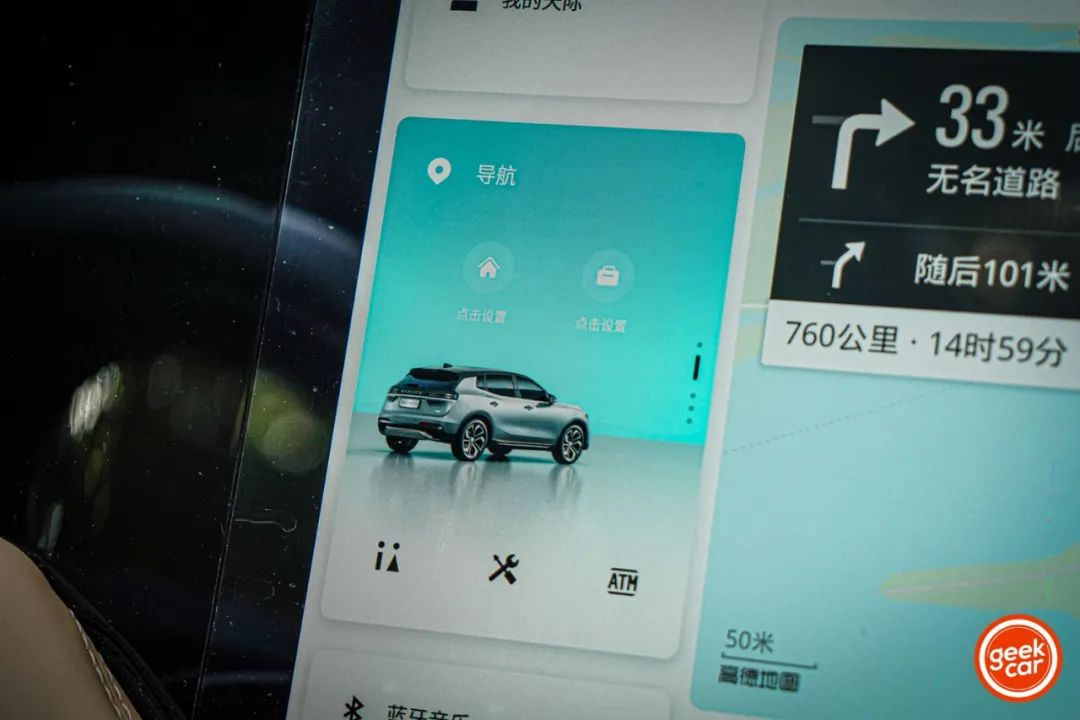
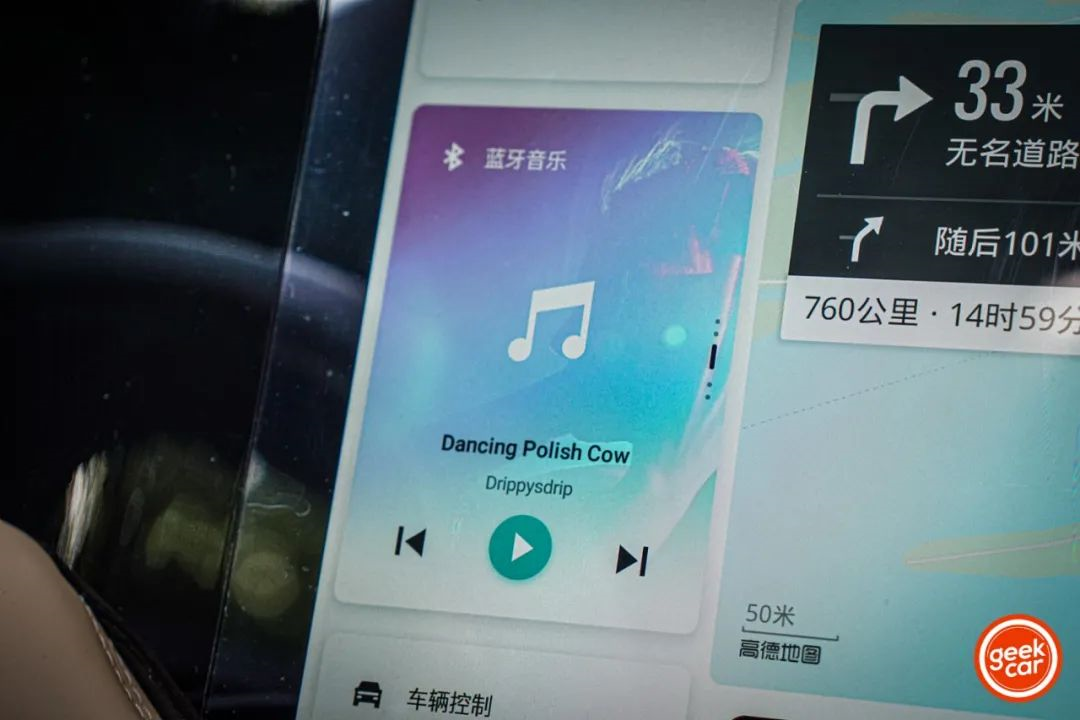
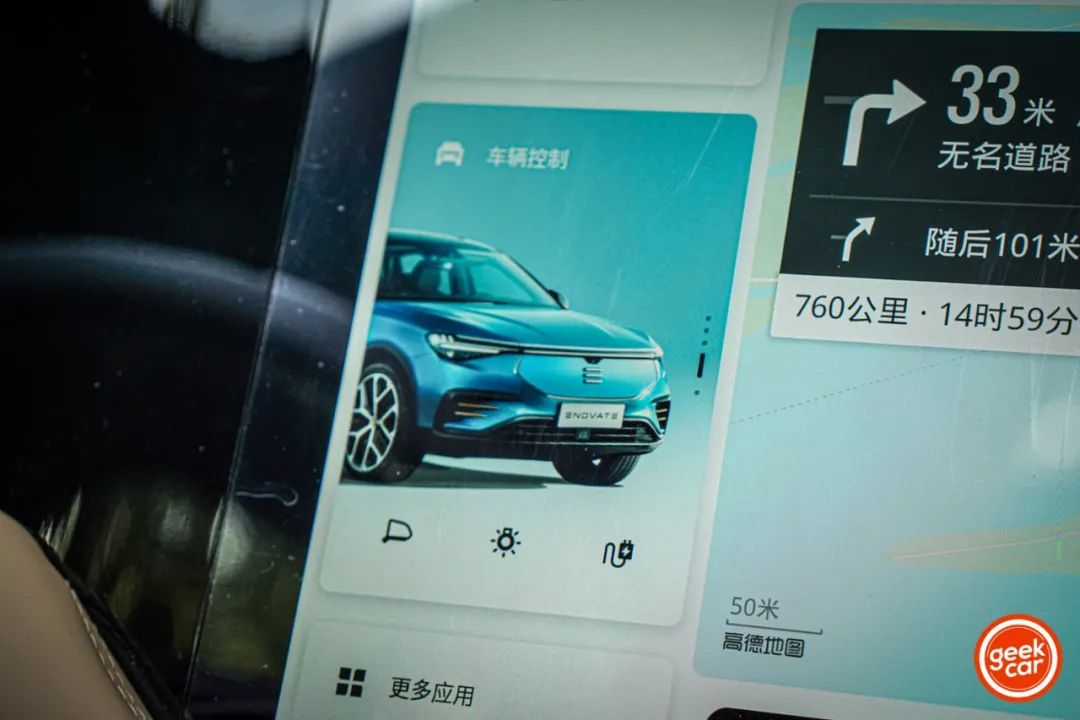
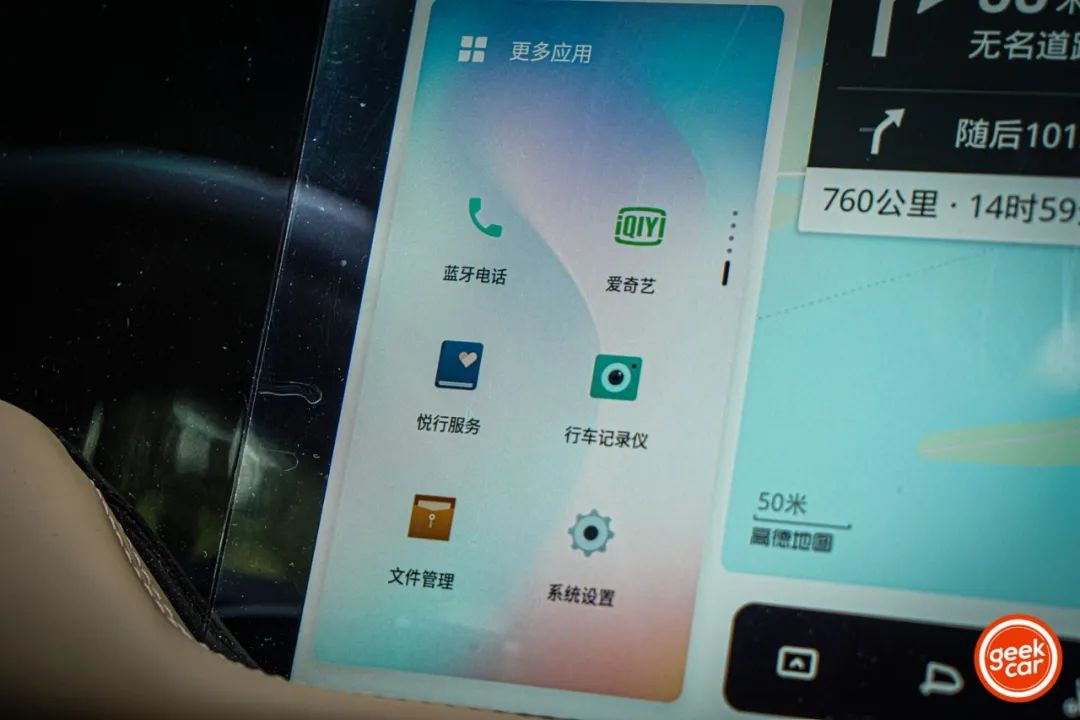
The central control screen also has a “driver-centric” design shifted to the left, which is more conducive to the driver’s observation of navigation and other applications during driving.
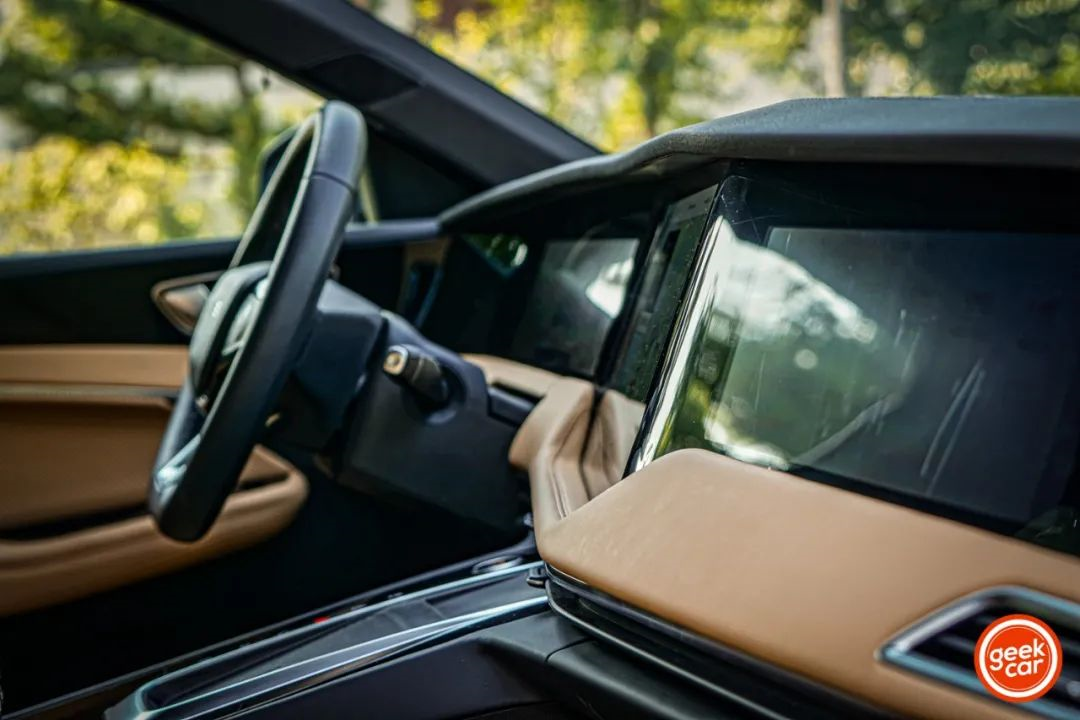
Overall, there are no major flaws in the use of the vehicle system. The fluency of the vehicle system is still acceptable, except for some lagging in the first few minutes after turning on the system. All the commonly used functions in the driving scenarios are complete, such as: Gaode Maps for the vehicle version, QQ Music, Himalayas, Tingban, and iQiyi.
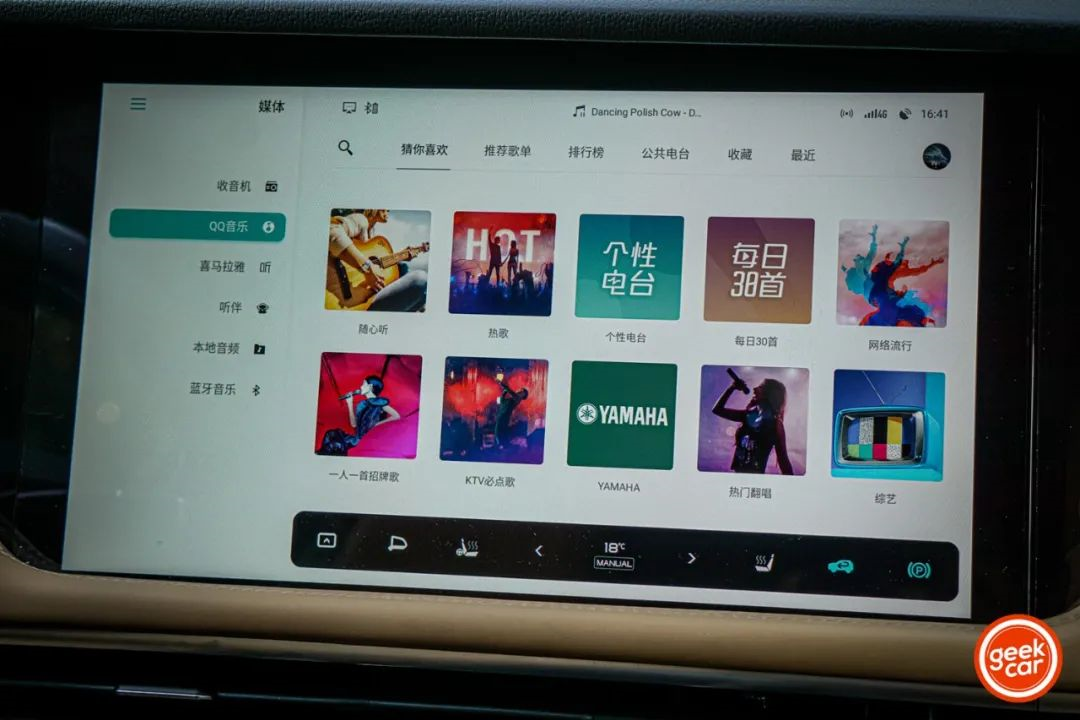
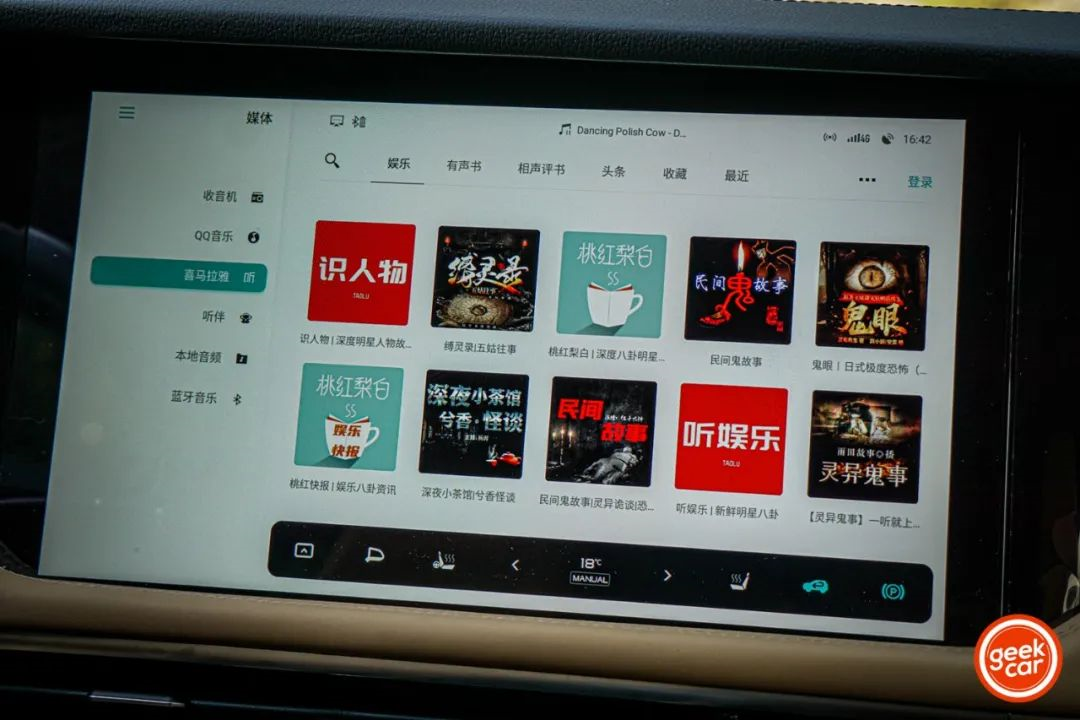
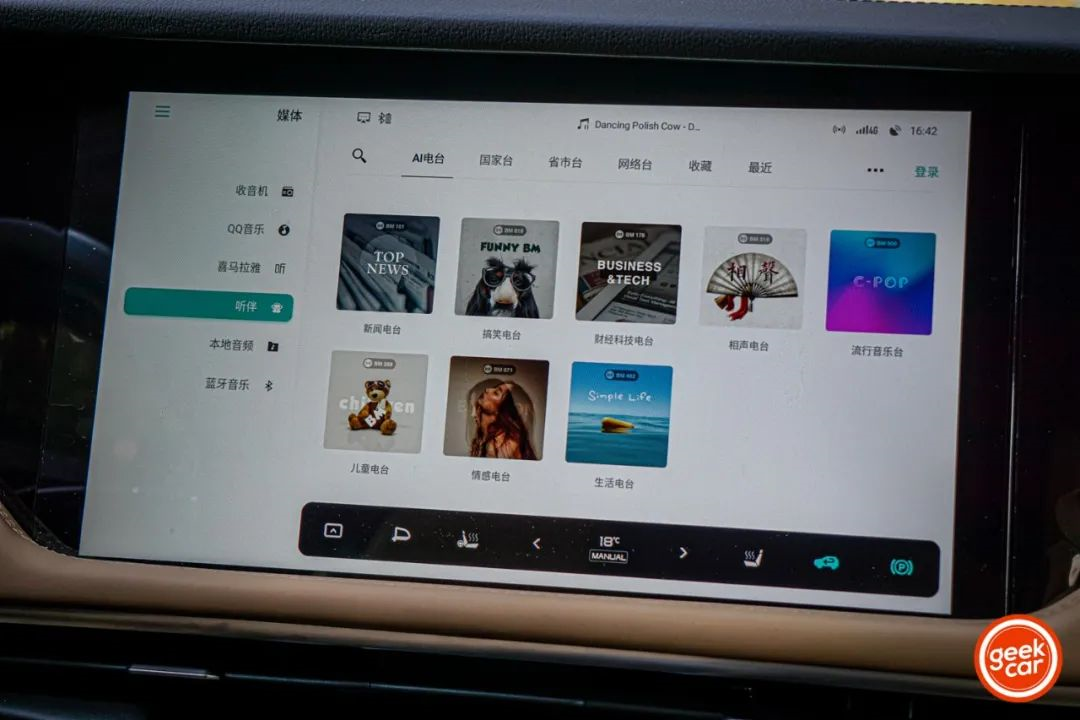
Three points to summarize this vehicle system for being quite satisfactory are:
- The accuracy of voice recognition is high, and the response and execution speed are fast.
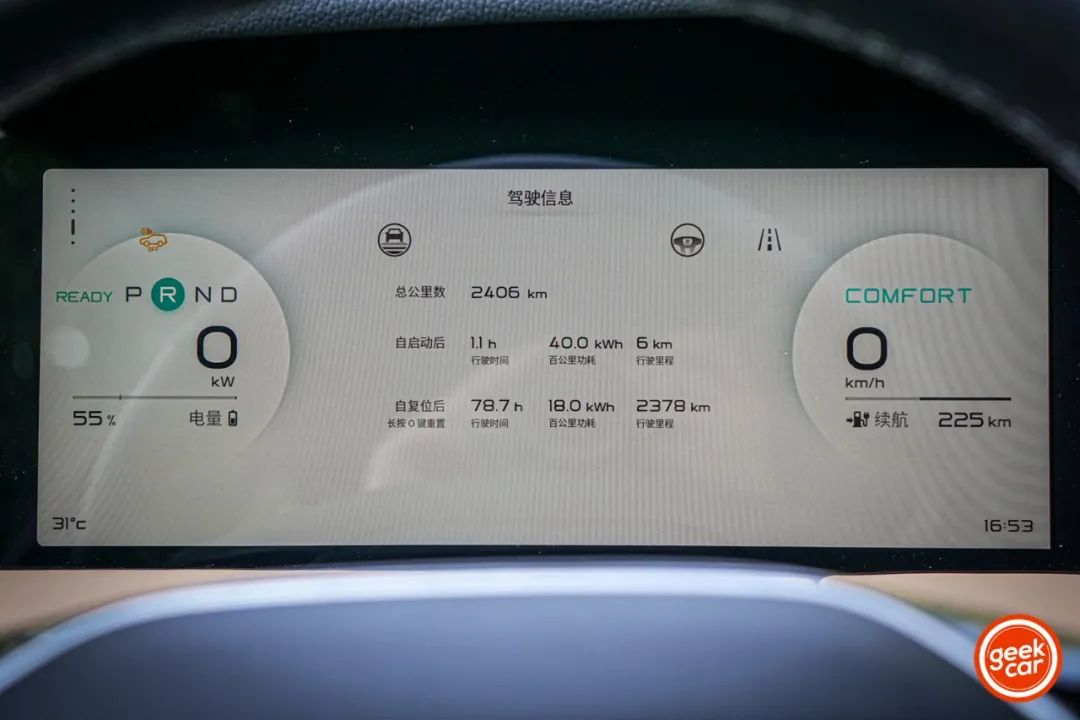
There is good signal for the in-car network. When my phone has no signal in my home garage, the car can still be connected to the internet and locate the position.
The screen resolution is quite good, and Gaode map and iQiyi can be used full screen (P.S. You can watch TV shows while charging at the charging station to pass the time…).
The front passenger seat of the Skyworth ME7 is equipped with a 12.3-inch entertainment screen, which can control the air conditioning, seat, listen to radio, music, and watch iQiyi videos.

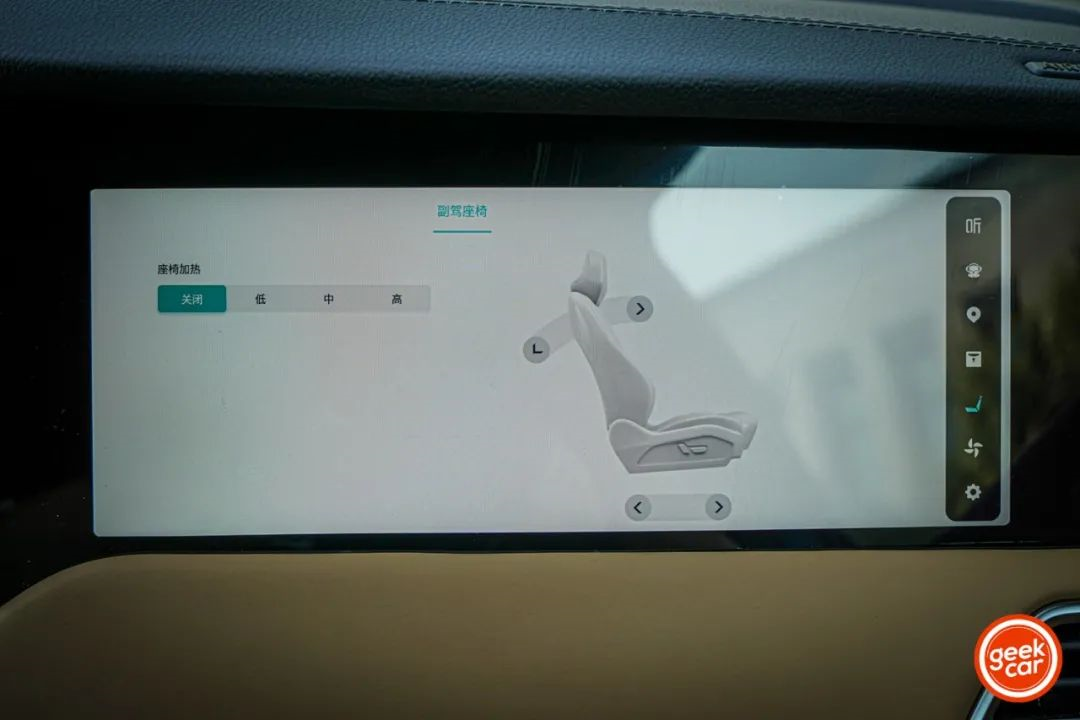
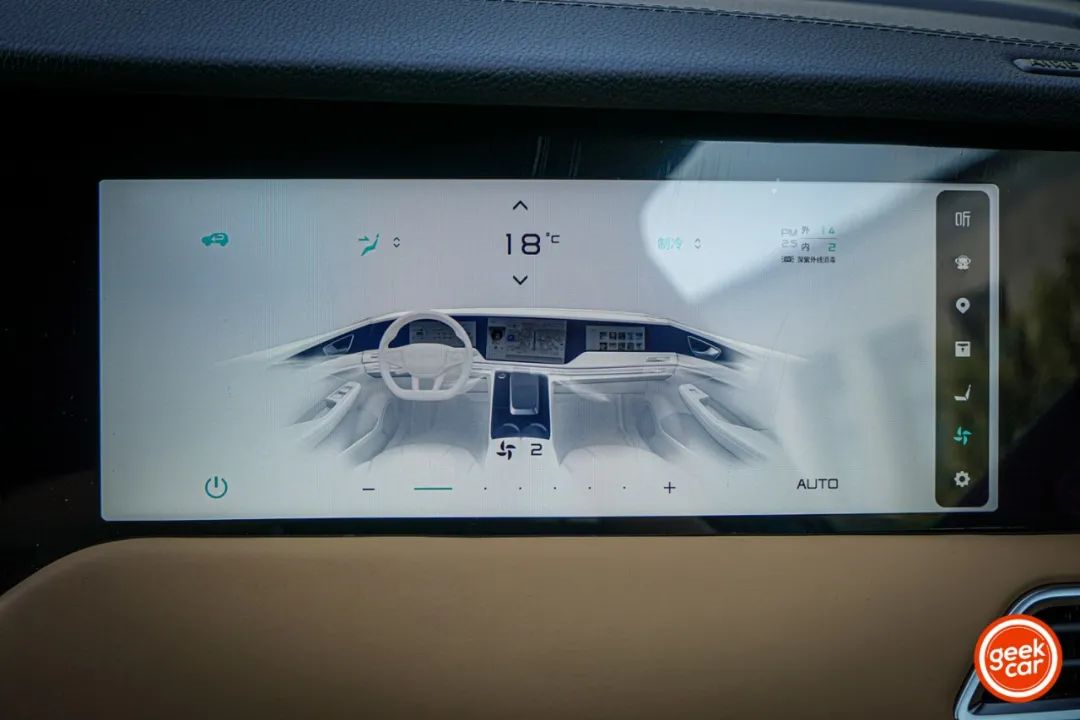
In addition to displaying basic information such as speed, power consumption, gear position, time, and temperature, the instrument panel’s central part can also switch between functions including navigation, assisted driving, media, and mileage information.
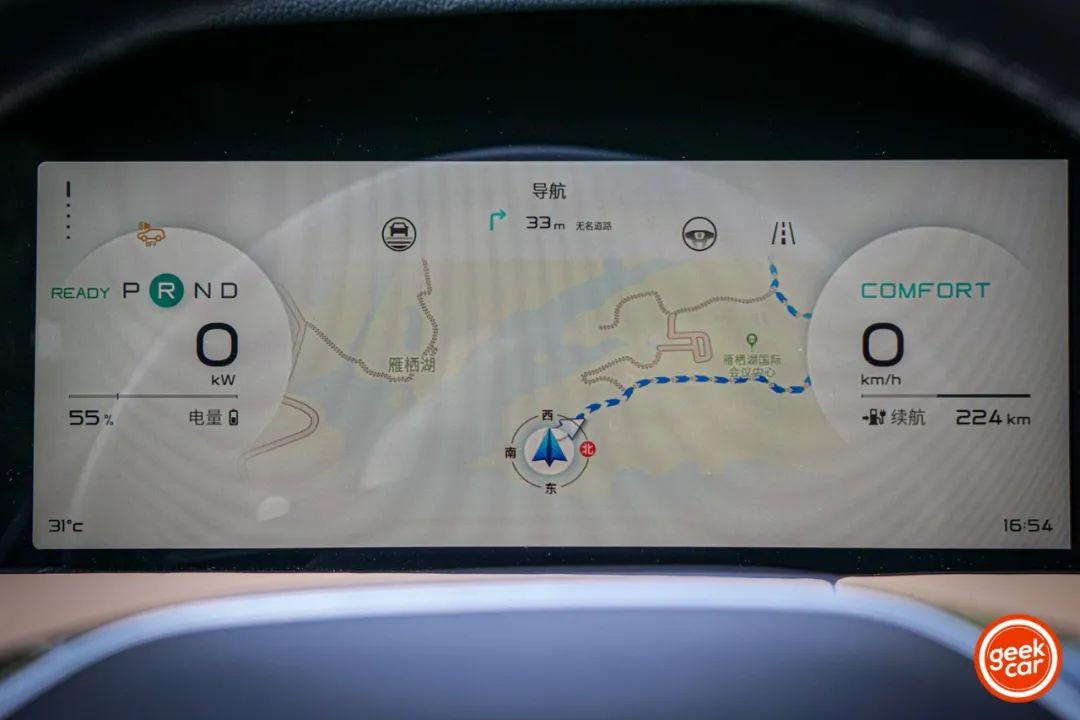
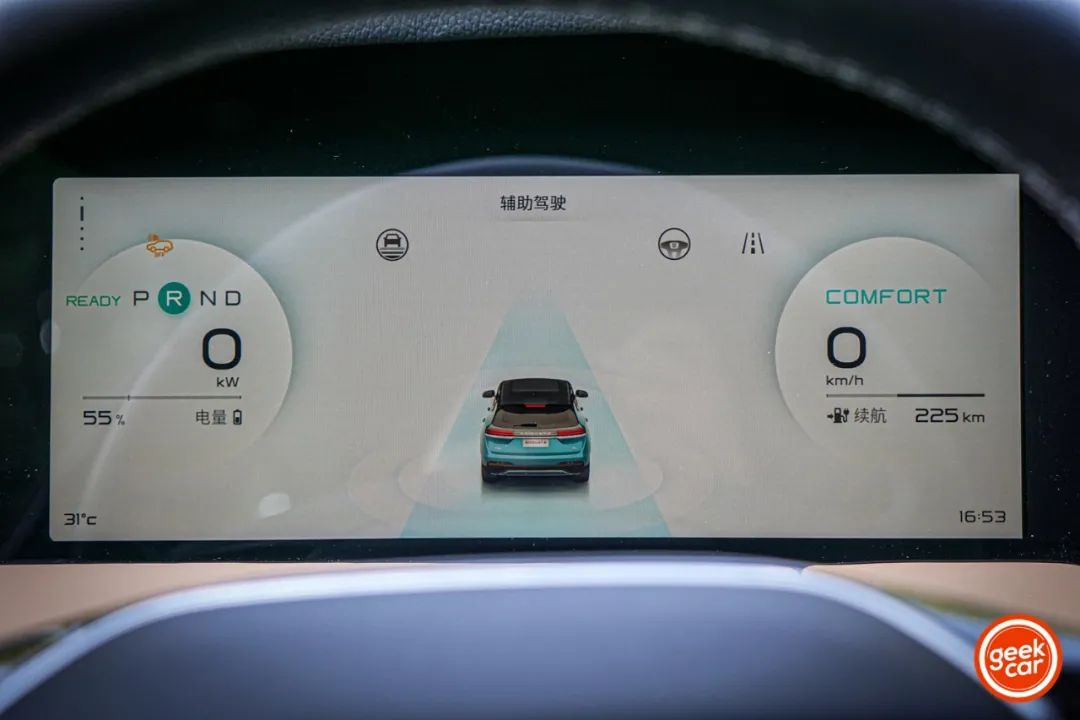
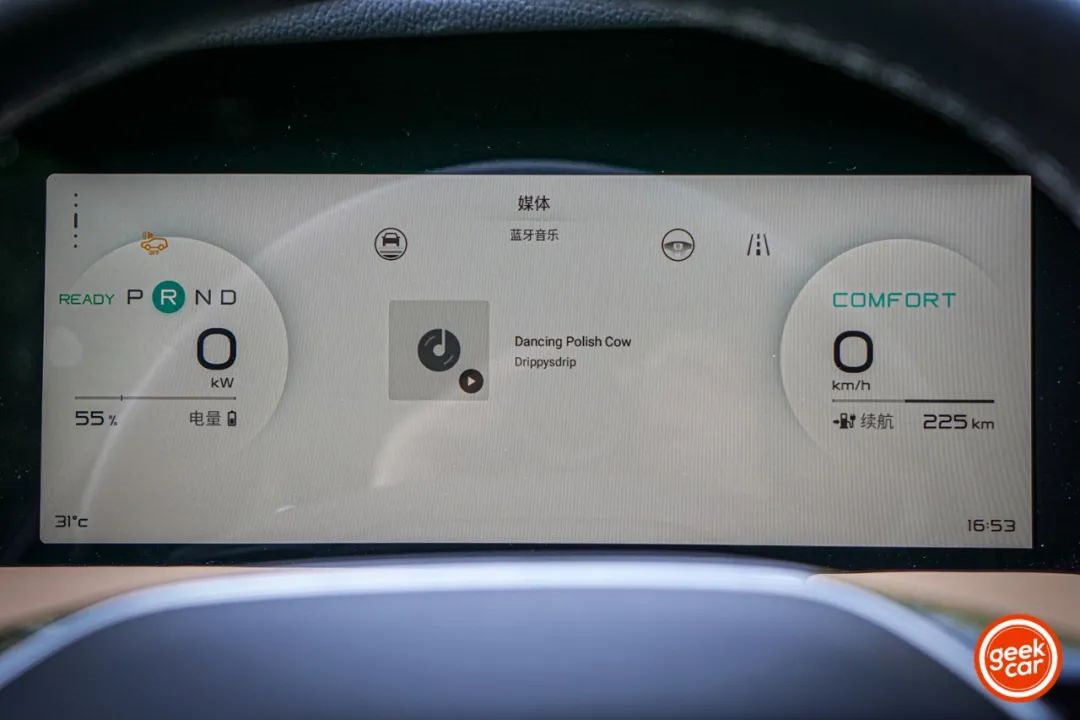

Here is a weakness: when switching these functions, it is not possible to quickly switch continuously. You must wait for the switching animation to complete before switching to the next function. For example:I need to switch from the first navigation information to the fourth mileage information by pressing down one by one, which may take about 10 seconds.
Apart from these blocks of screens, I think there are four slots in the cockpit:
-
The air conditioning, as long as it is turned on to cool, feels particularly cold no matter what temperature is set. (P.S. Does that mean it’s not good or does it mean its cooling effect is good?)
-
The custom buttons (*) on the steering wheel are always accidentally touched when parking or turning, and the camera will always take photos automatically every time the steering wheel is turned.
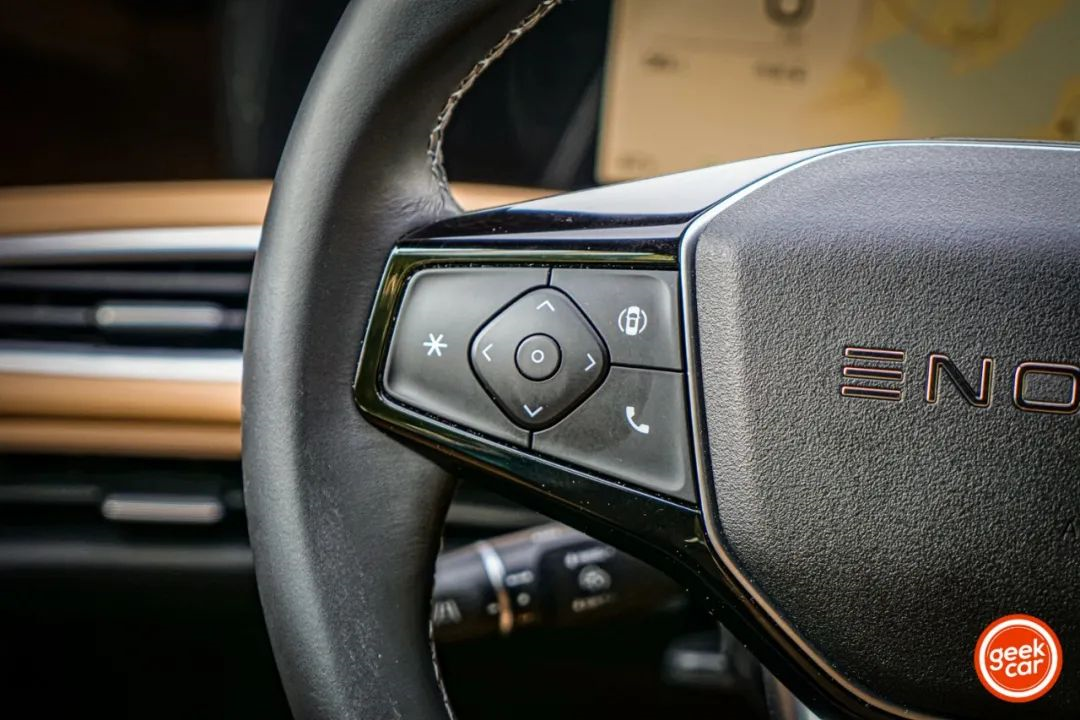
Not only me, but another media outlet also encountered this problem;

- The sunroof and sunshade do not have physical buttons and can only be controlled by voice or found in a deeper level of the car system. (P.S. Can’t you learn from Tesla? Tesla doesn’t even have a sunshade…)
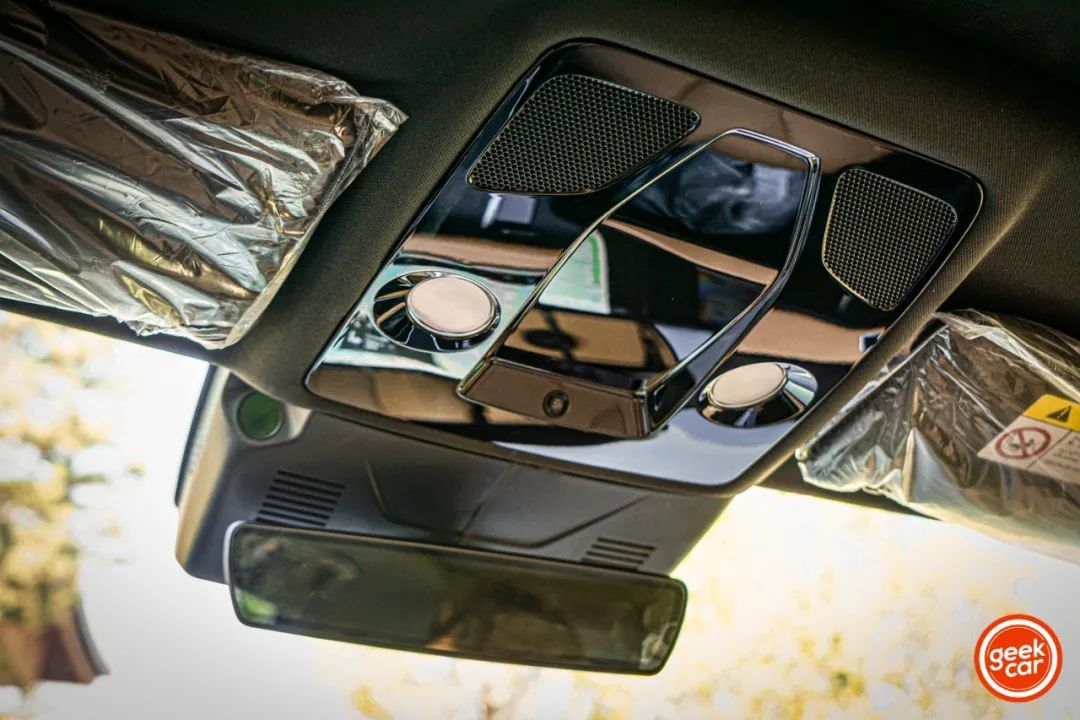
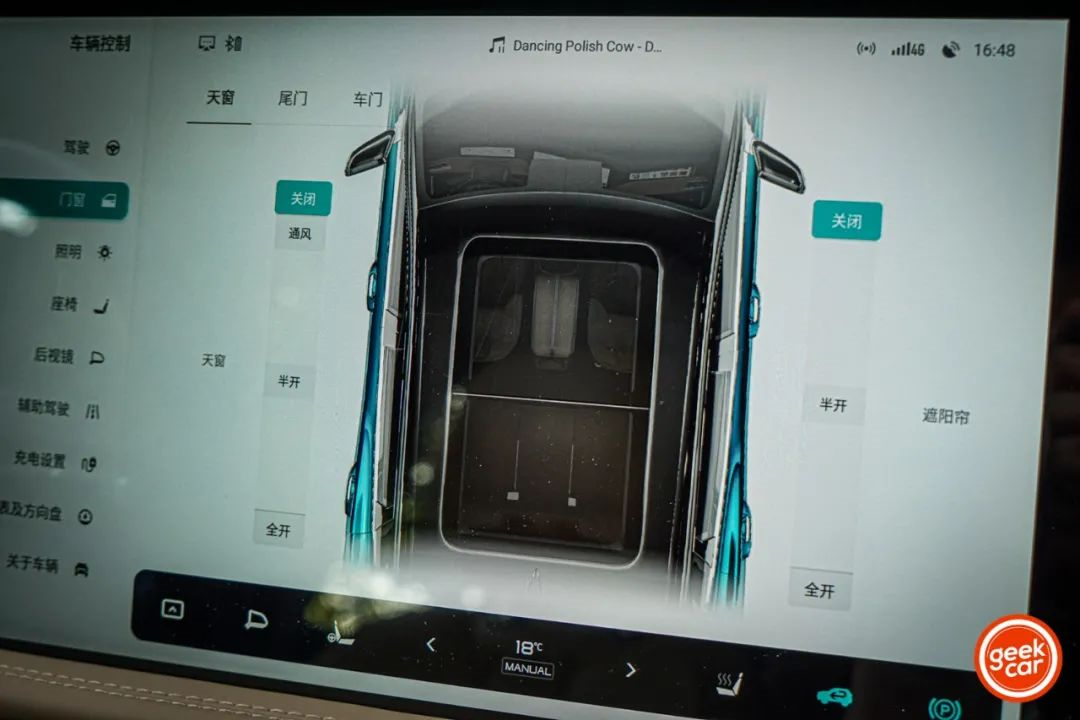
- The design of the ambient lighting… It’s completely “tuhai” (a term of Chinese online slang meaning awkward and unsophisticated).
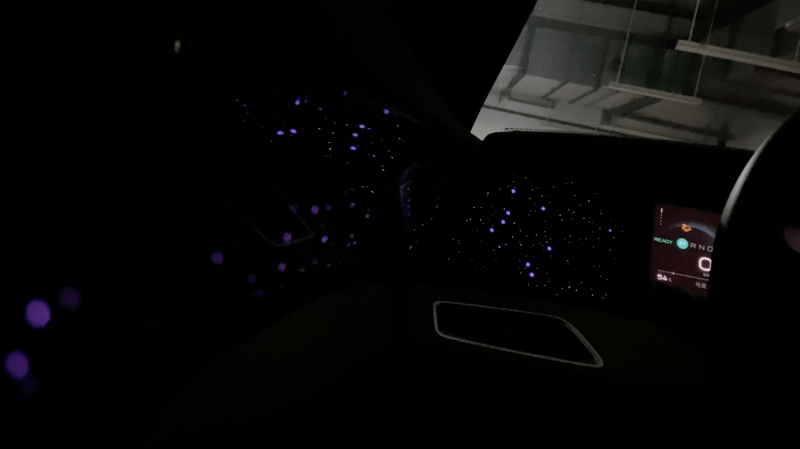
Regarding the design of this ambient lighting, an “insider” from Skyline revealed that it is imitating Rolls-Royce…

The performance of the entire cockpit is average, which is sufficient for basic travel scenarios.

After discussing the intelligent cockpit, let’s talk about intelligent driving. Although the performance of the intelligent cockpit is “mixed”, I am still quite surprised by the performance of intelligent driving (I’m not saying there are no shortcomings…).
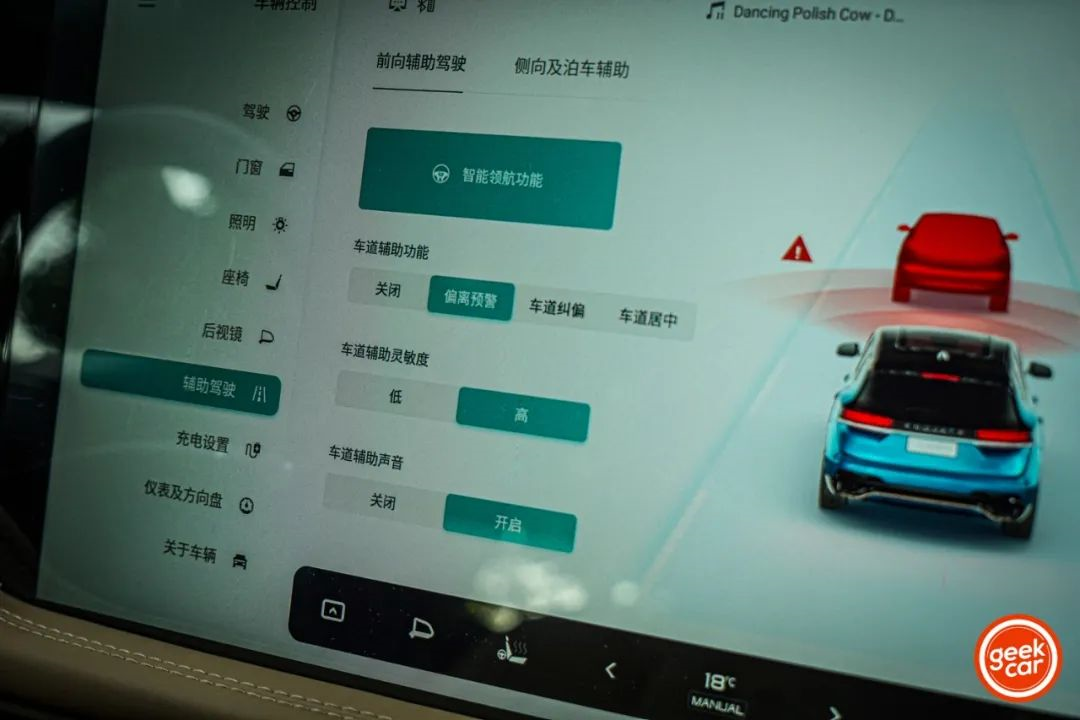 First of all, the ME Pilot assisted driving system of the Skyworth ME7 claims to be Level 2.5, but after using it for a month, I insist that it belongs to Level 2. The Skyworth ME7 can provide Level 2 assisted driving functions such as lane departure warning, ACC adaptive cruise control, and lane centering, but it is not equipped with the additional functions that Level 2.5 can provide, such as autonomous on/off ramp, lever lane change or autonomous lane change.
First of all, the ME Pilot assisted driving system of the Skyworth ME7 claims to be Level 2.5, but after using it for a month, I insist that it belongs to Level 2. The Skyworth ME7 can provide Level 2 assisted driving functions such as lane departure warning, ACC adaptive cruise control, and lane centering, but it is not equipped with the additional functions that Level 2.5 can provide, such as autonomous on/off ramp, lever lane change or autonomous lane change.
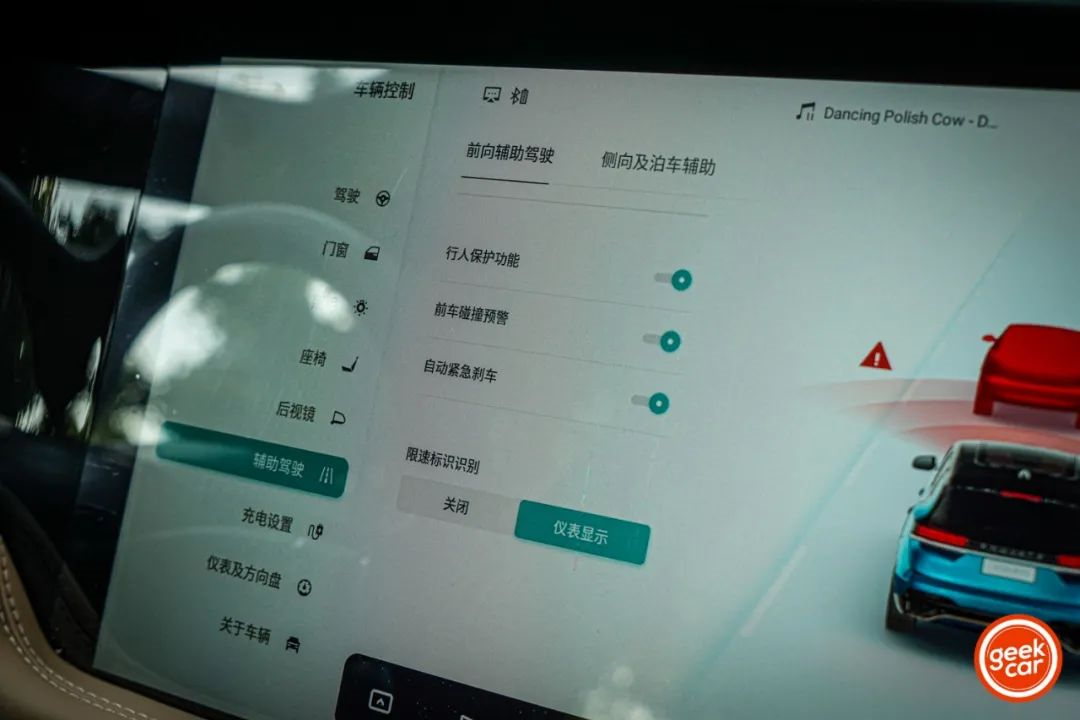
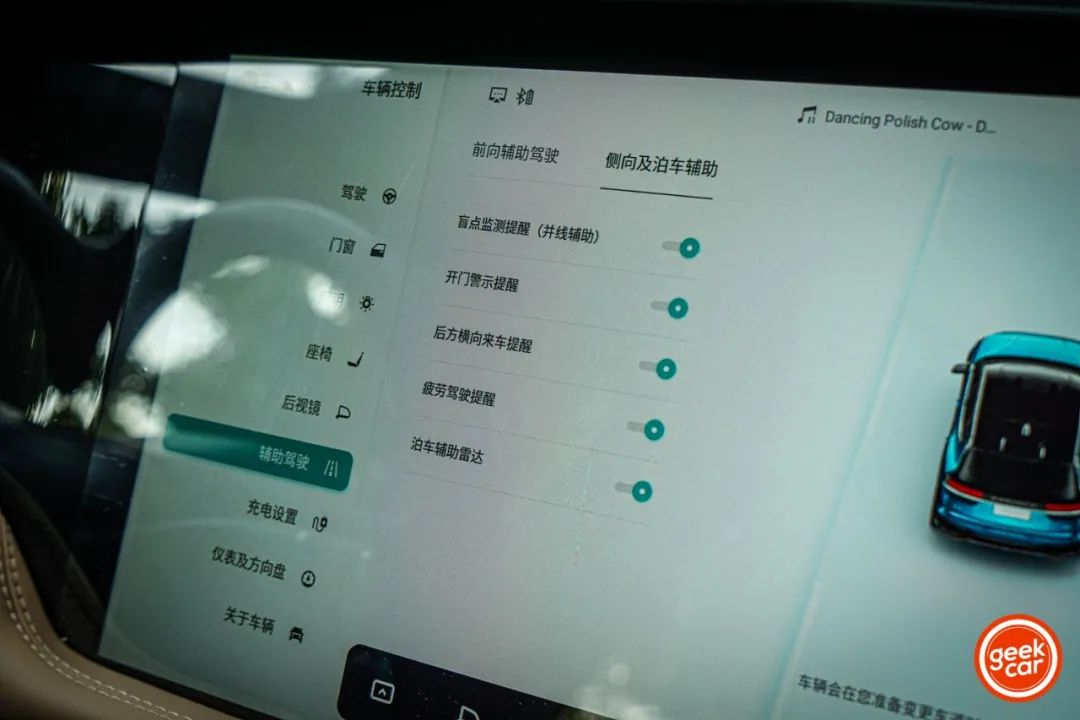
Similar to Tesla’s startup logic, the Skyworth ME7 only needs to toggle the assisted driving lever twice to activate the assisted driving function.
In actual driving situations, the experience of the assisted driving system from a Level 2 perspective is still good. The vehicle distance control and deceleration when facing merging vehicles is gentle, and it can always maintain the center position in bends, unlike some models that tend to “wander” left and right in bends.

However, the assisted driving control lever is placed on the left side of the steering column, which is blocked by the steering wheel. Therefore, you need to remember how to operate each function of the lever in order to get used to it. Just like playing games, we can easily press the buttons on the controller without looking at it and enter the Konami Code.
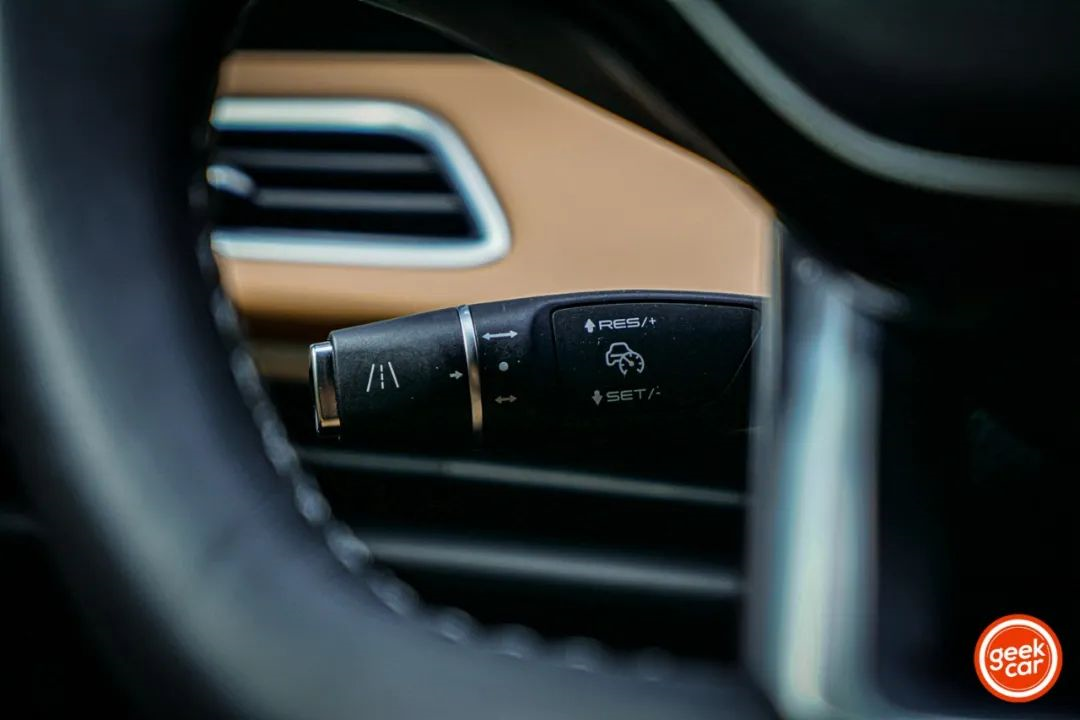
Also, regarding the vehicle distance adjustment, every time you turn on the assisted driving system, the default distance is 3rd gear (highest gear). If you want to shorten the following distance, you need to lower it by one gear first, wait for the distance prompt window on the dashboard to disappear, and then lower it by one gear again to adjust to the shortest following distance.
Similarly to the operation of switching functions on the instrument panel, it is indeed a bit inconvenient in driving scenarios.
On the functions of the intelligent cockpit and intelligent driving, there is no major problem with the Skyworth ME7, but there is still a lot of room for improvement in terms of interaction convenience.
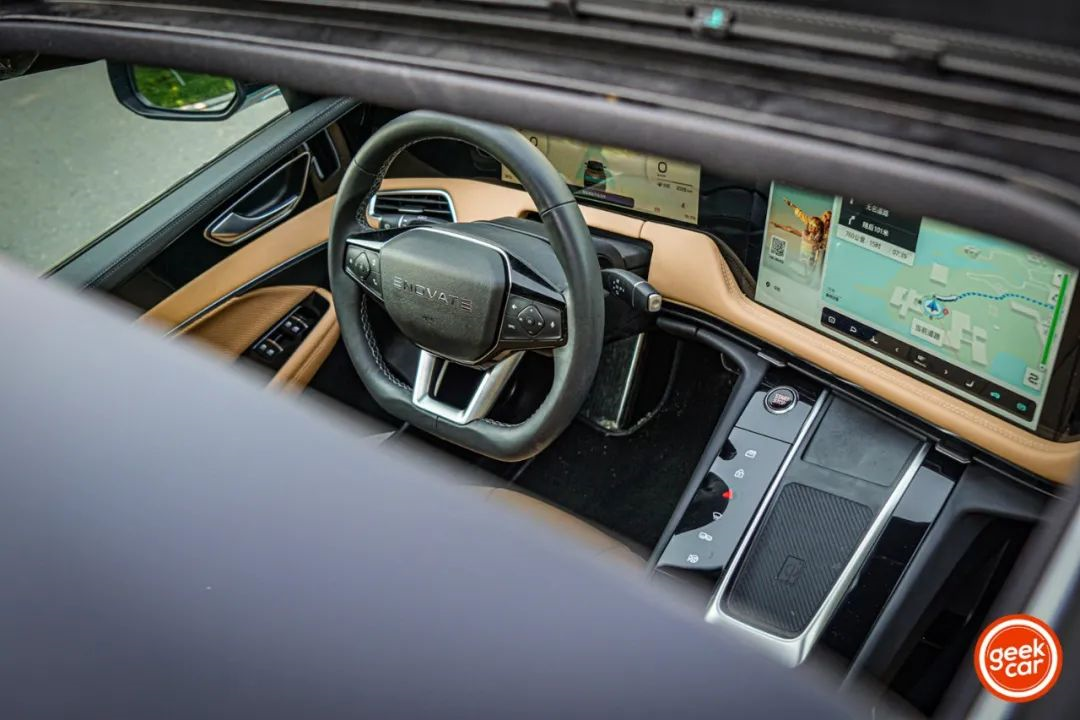 We can see that the interaction design of the Skywell ME7 is learning a lot from Tesla in many ways. Although Skywell ME7 is not the only one that is following in Tesla’s footsteps, compared to Tesla, Skywell ME7 can only be considered a “student”.
We can see that the interaction design of the Skywell ME7 is learning a lot from Tesla in many ways. Although Skywell ME7 is not the only one that is following in Tesla’s footsteps, compared to Tesla, Skywell ME7 can only be considered a “student”.
Charging Station Every Three Days
Since the Skywell ME7 is an electric vehicle, we must talk about “electricity” with everyone.
At present, the Skywell ME7 has two versions, one with an NEDC range of 410 km and the other with an NEDC range of 530 km. The car I borrowed was the 410 km NEDC version. The subsidized price for the 410 km version is 238,800 yuan, and the subsidized price for the 530 km version is 269,800 yuan. In terms of configuration, except for the difference in range, the two models are the same.
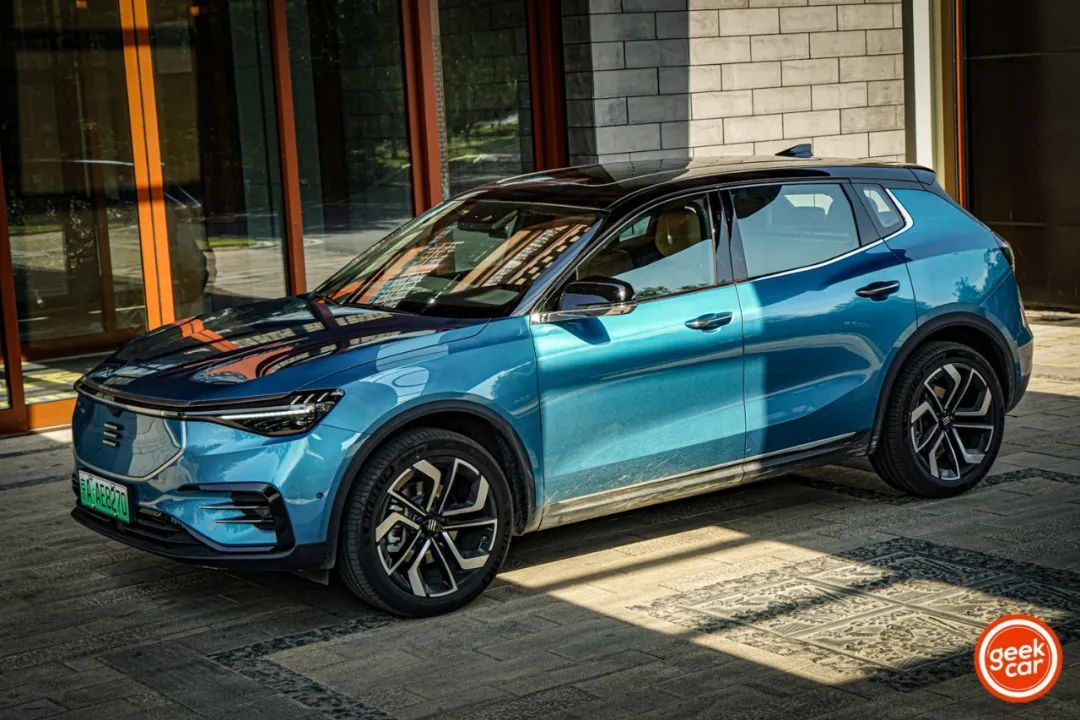
I don’t know if you remember, but there have always been people who mock electric cars as “either charging or on the way to charge.” This sentence has really come true for me this month.
Let me briefly tell you about my daily car usage. My workday commute is about 75 km round trip, and if I have a business trip, it’s about 50 km round trip from my home to the airport. I basically use it in the city and only took one long-distance trip this month, round trip from Guomao to Gubei Water Town, about 280 km.
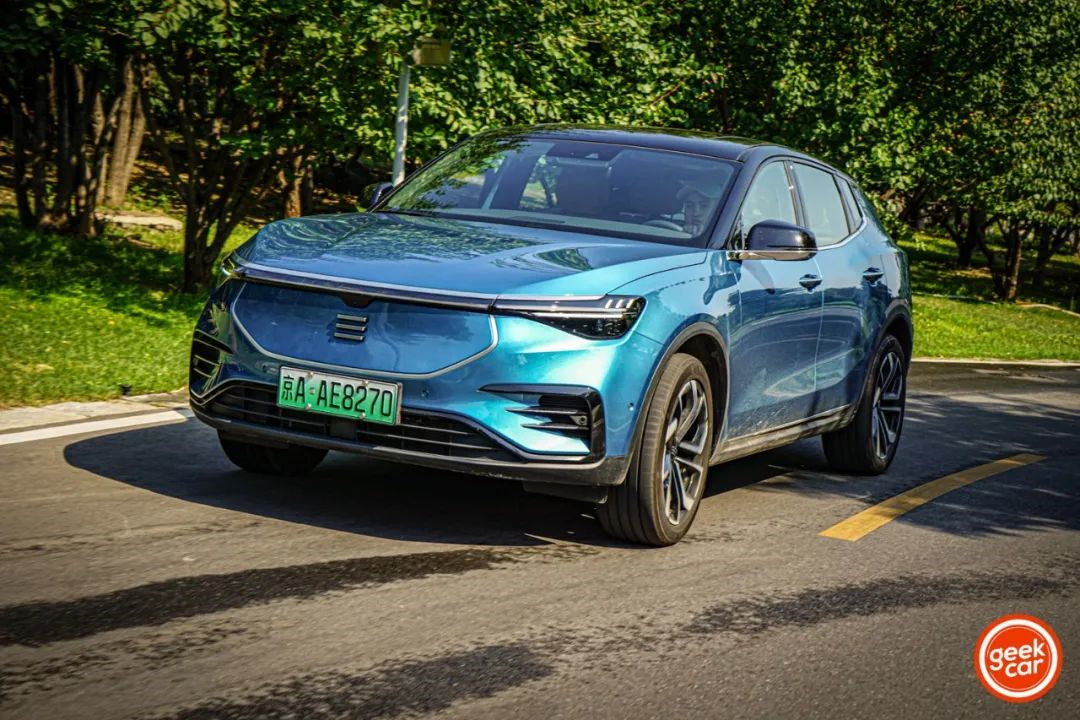
You can take a brief look at my charging records:
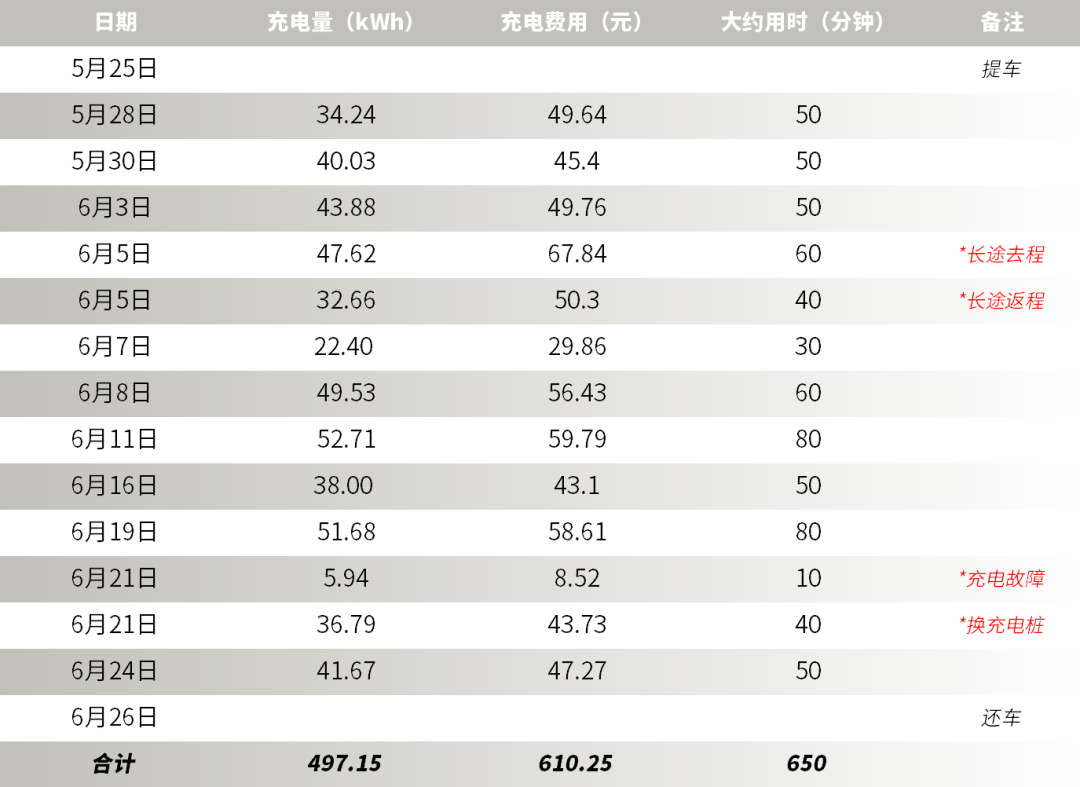
In total, I charged about 500 kWh of electricity, which cost about 610 yuan (excluding parking fees), and it took about 11 hours to charge.
I am actually a “heavy mileage anxiety patient”, especially after driving the Skywell ME7…Because my daily commute is almost 80 km, I usually charge it when the remaining range is within 80 km. As long as I don’t take long-distance trips, I usually set the maximum charge to 90%.
Also, for someone like me who doesn’t have an EV or a charging pile at home, I have to go to a charging station every time I charge. If you are like me and don’t have a charging pile at home or cannot install a charging pile, you can use my charging record as a reference.Translated English Markdown Text with HTML tags intact:
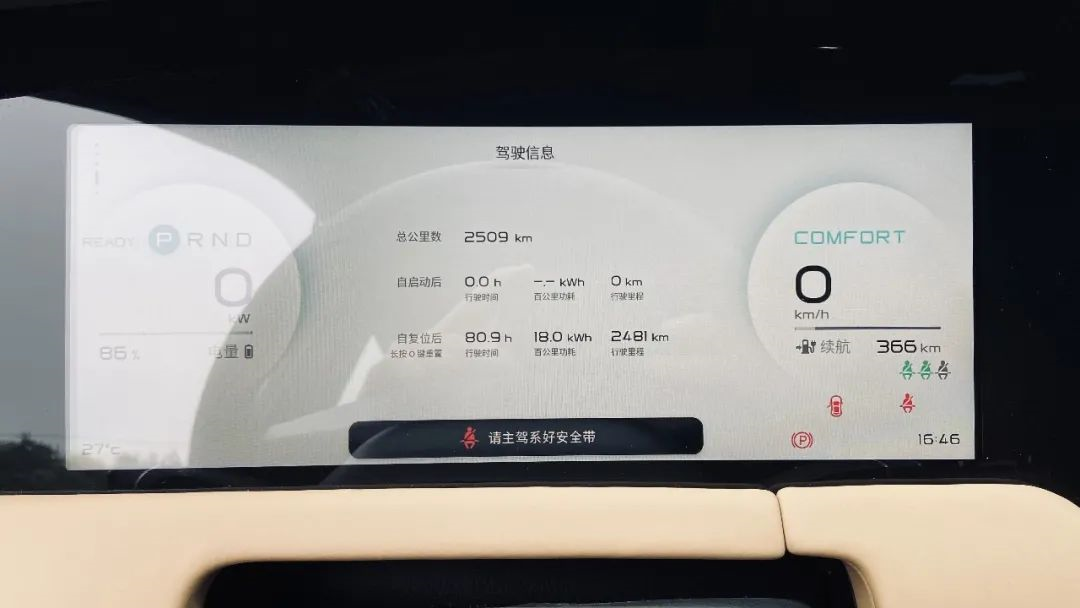
When I returned the Skywell ME7, the average power consumption recorded was 18 kWh / 100 km. This is the average power consumption for me over the past month, and it is a bit disappointing for 90% of car usage scenes in urban areas. Additionally, I saw on the “auto home forum” that the owner of the 530 km version drove 1,463 km in one month after picking up the car, and the average power consumption reaching 21.5 kWh.
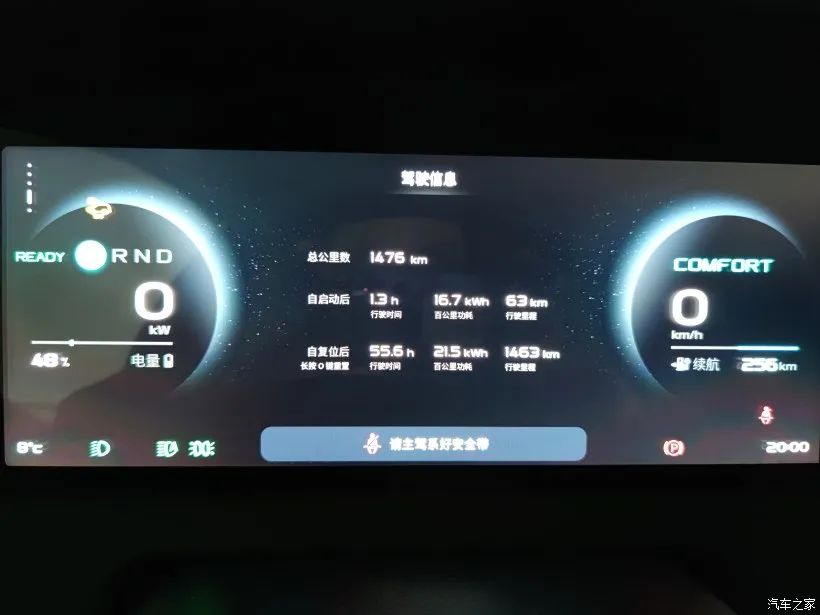
-
By calculating with my power consumption of 18 kWh / 100 km and the 54 kWh battery of this car, the actual cruising range when fully charged to 100% is about 300 km. If only charged to 90% like I do, the cruising range may be only 270 km, which is why I need to recharge every three days.
-
By calculating based on the 21.5 kWh power consumption of the auto home forum owner and the 72 kWh battery of the 530 km version, the actual cruising range when fully charged to 100% is about 335 km. If only charged to 90% like I do, the cruising range may be only 301 km.
Of course, this is also related to everyone’s driving habits, road conditions, air conditioning, etc. I can only say that my driving habits may be much gentler than the auto home forum owner.
Therefore, for the Skywell ME7, the cruising performance is indeed a fatal flaw. Of course, if you have a charging pile at home, that’s another story.
Finally, the driving performance
Nowadays, many models call themselves “intelligent electric vehicles.” If we split it into “intelligent”, “electric”, and “vehicle,” the “vehicle” part is actually the fundamental part.
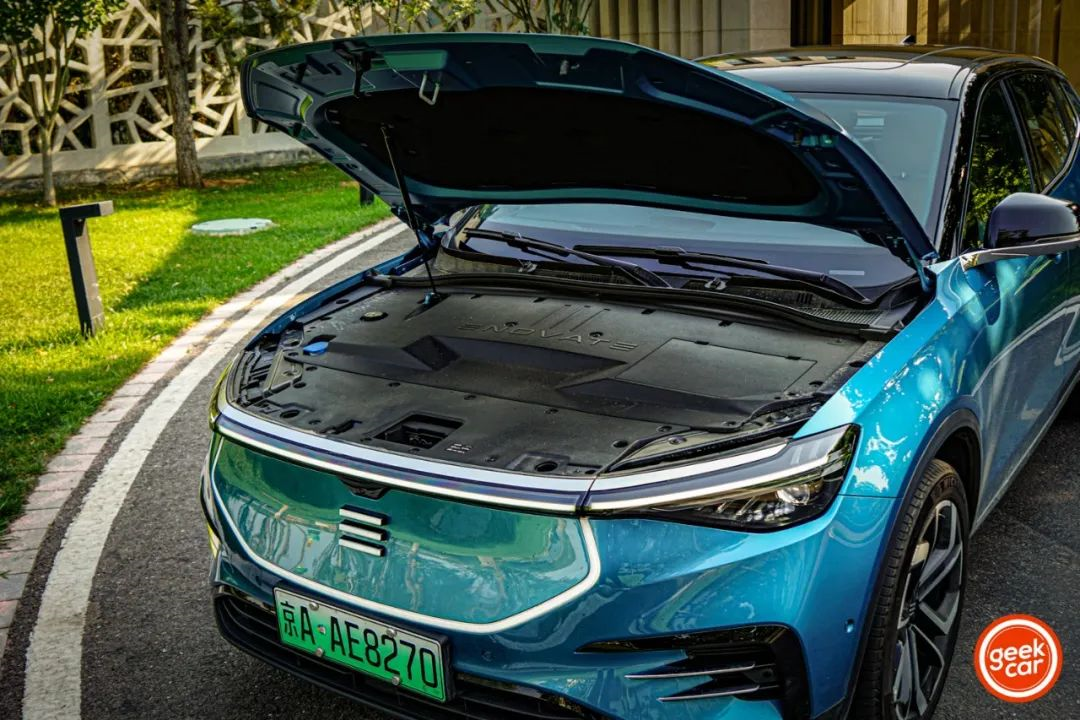
The Skywell ME7 adopts a front-mounted single electric motor power layout, with a maximum power of 160 kW, a maximum torque of 330 N·m, and an acceleration of 0-100 km/h in 7.7 seconds. The acceleration performance is not strong, similar to a low-power 2.0T gasoline car, but is more violent in the starting stage.When driving at high speeds, it becomes noticeably harder to accelerate once you hit 100 km/h. However, for basic commuting and occasional high-speed journeys, it is sufficient.
Speaking of driving, let’s talk about the steering wheel. First of all, it has too many turns and too much play. As you can see in the following GIF, when I drove the Skyworth ME7 to a charging station for the first time and tried to park in a side spot, I struggled and failed to turn the wheel enough times to get the car into the spot. The extra turns made me steer too little each time, causing the car to not fit. The two guys charging next to me looked at me in disbelief, they probably had never seen someone park so badly.
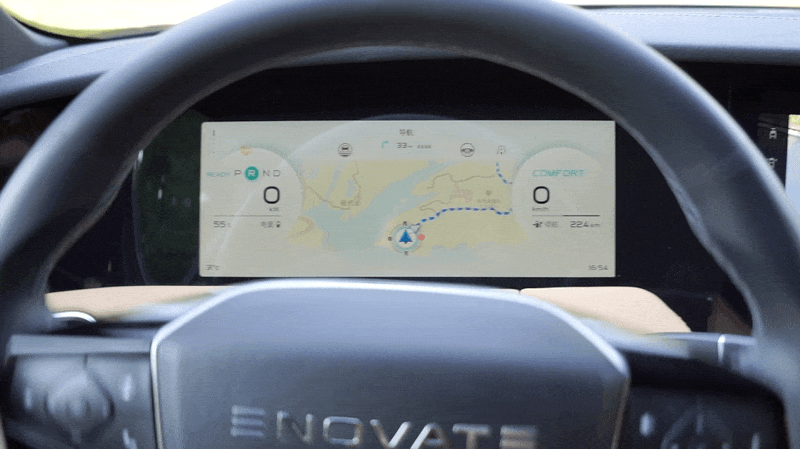
Here’s a question for you all: Is a multi-link suspension always stronger than a torsion bar?
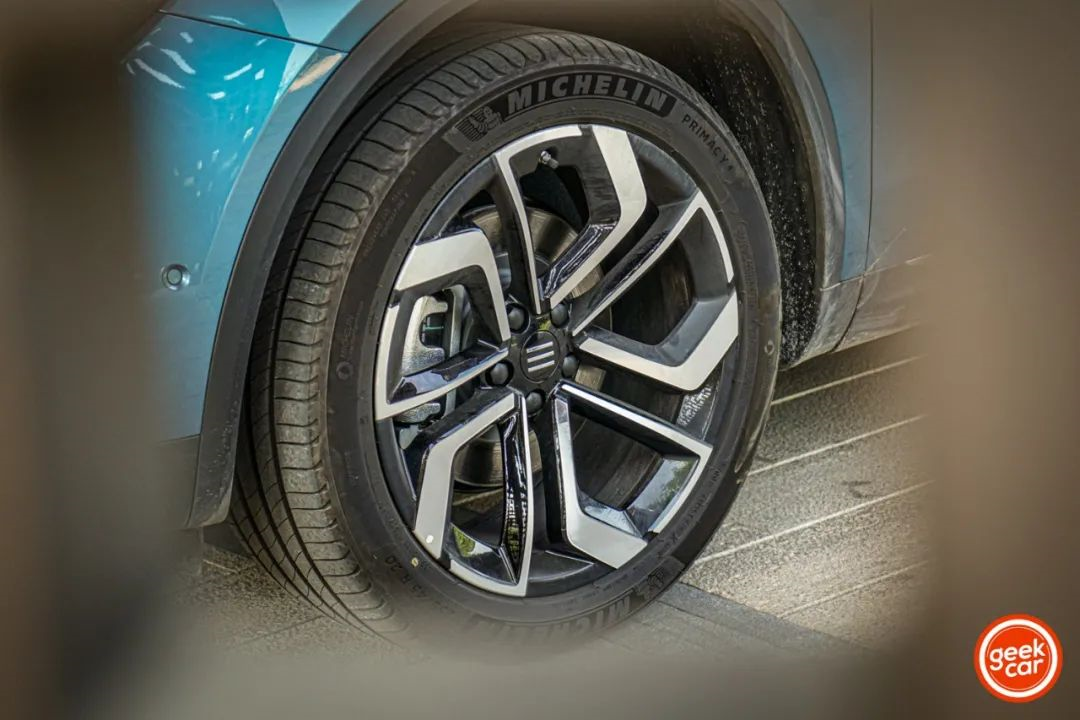
The Skyworth ME7 is equipped with front MacPherson and rear multi-link independent suspension, but the overall suspension tuning is very stiff. There is almost no shock absorption effect when going over speed bumps or rough roads, and sometimes it even jumps over them.
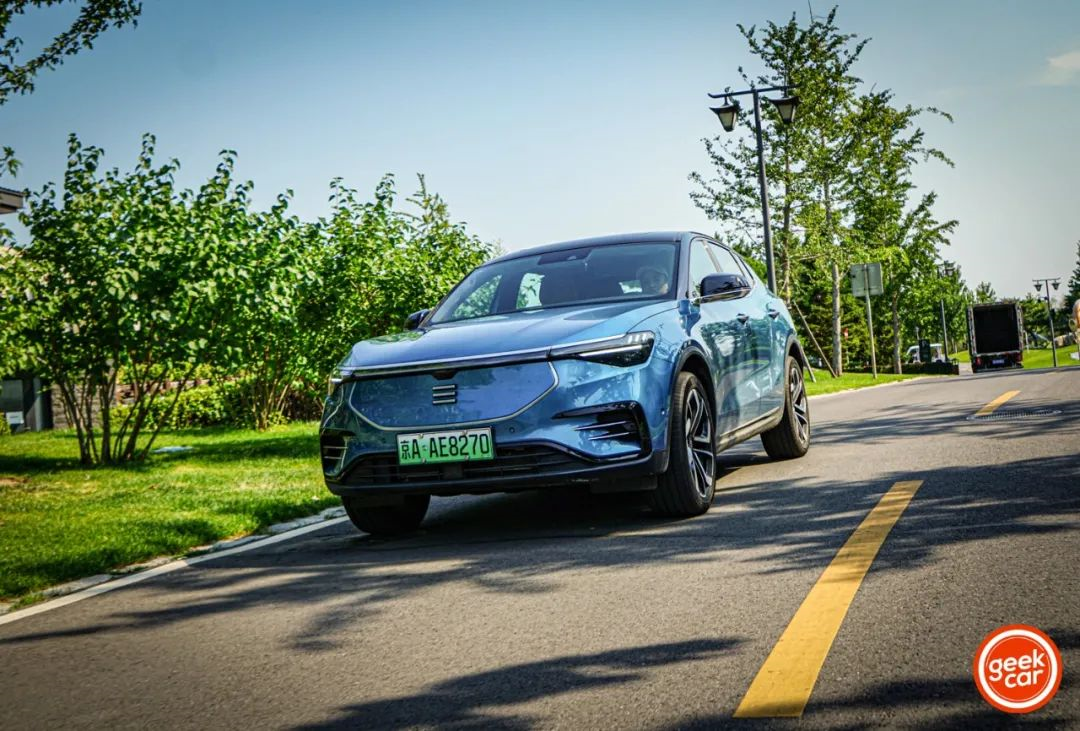
Therefore, there is really no need to talk about the handling, directional stability, and suspension comfort of this car.
Moving on to riding performance, the front row of the Skyworth ME7 is problem-free. Even people who are 1.8 meters tall and weigh 200 pounds will not feel any pressure.
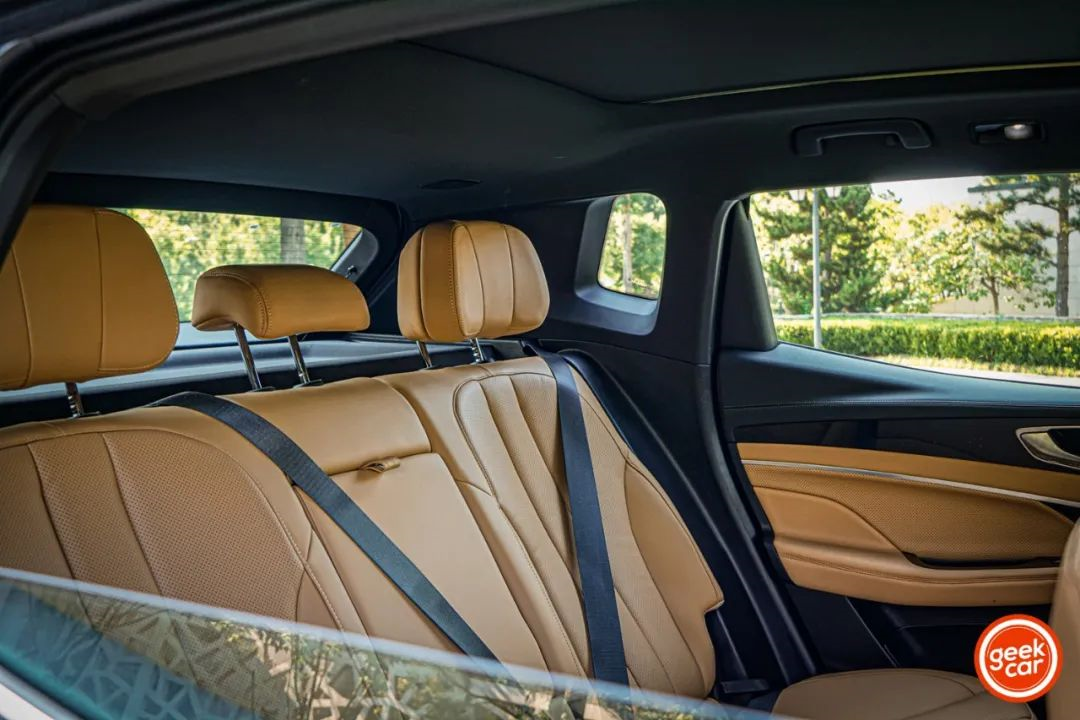
I want to commend the performance of the rear seats, the backrest angle is very large, so the head space is very good when sitting in the back. In addition, the seating position is tilted back, so you will not feel uncomfortable after sitting for a long time.
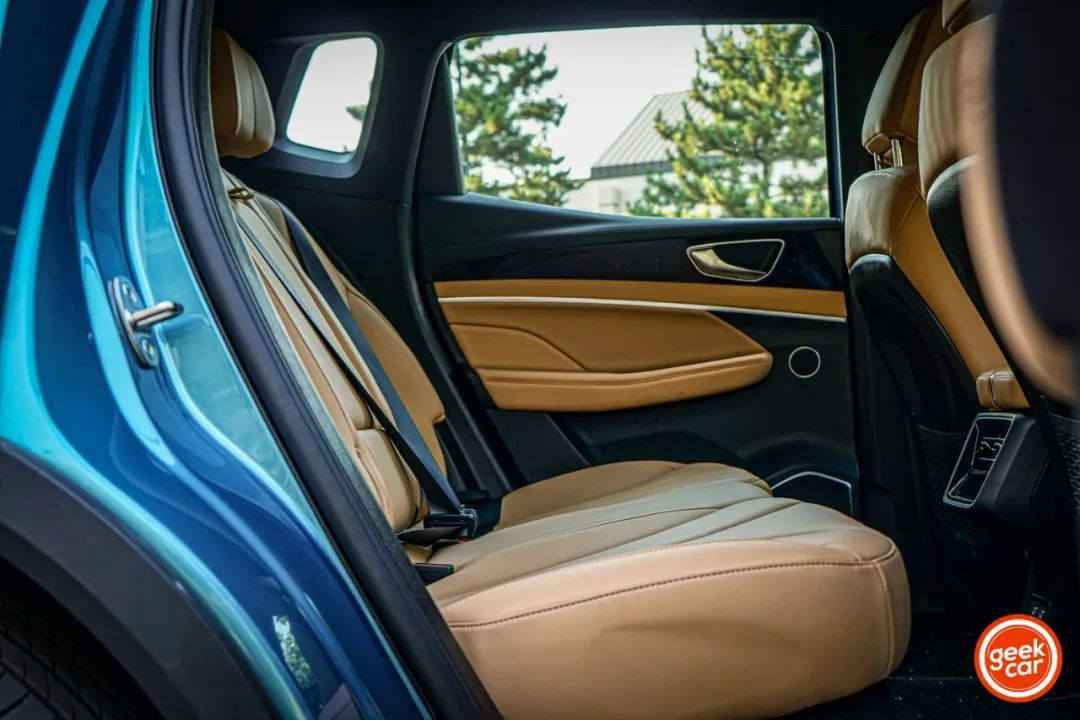
For a mid-size SUV, the driving and riding space performance is still quite good.
One last thing, let me talk a bit more about our expectations for the Skyworth ME5. After talking about the Skyworth ME7 for so long, as Skyworth’s first model, I don’t think it is very successful.After experiencing the past month, the performance of the Arcfox ME7 can be considered “mixed”. The Arcfox ME7 has performed well in terms of intelligence, but as a “car”, it still has many shortcomings, especially its endurance, which is a fatal blow to the Arcfox ME7.
In the past, the price of the Arcfox ME7 was reasonable compared to other medium-sized pure electric SUVs, but in terms of product strength and brand awareness, the Arcfox ME7 is bearing immense market pressure.
Furthermore, after the Tesla Model Y single-motor version with a post-subsidy price of 276,000 yuan appeared, many models, including the Arcfox ME7, were hit hard. To describe the current market situation of the Arcfox ME7, it can only be said that “adding insult to injury” is an appropriate description.
Now, Arcfox’s second model, the ME5, has been launched, which is positioned as a compact plug-in hybrid electric vehicle. I believe it can handle daily travel without any problems. However, I still hope that even in the era of intelligence, when building an “intelligent electric vehicle”, one should not forget the foundation of being a “car”.
This expectation is somewhat similar to my previous test drive of XPeng. When I first test drove the XPeng G3, the driving experience was not satisfying and the endurance performance was not surprising. But when the XPeng P7 appeared, it changed everyone’s perception and made people doubt if it was still a XPeng product.
In conclusion, every car should have a solid foundation and its own soul, build a good foundation, show its characteristics, and there will surely be different performances.
This article is a translation by ChatGPT of a Chinese report from 42HOW. If you have any questions about it, please email bd@42how.com.
